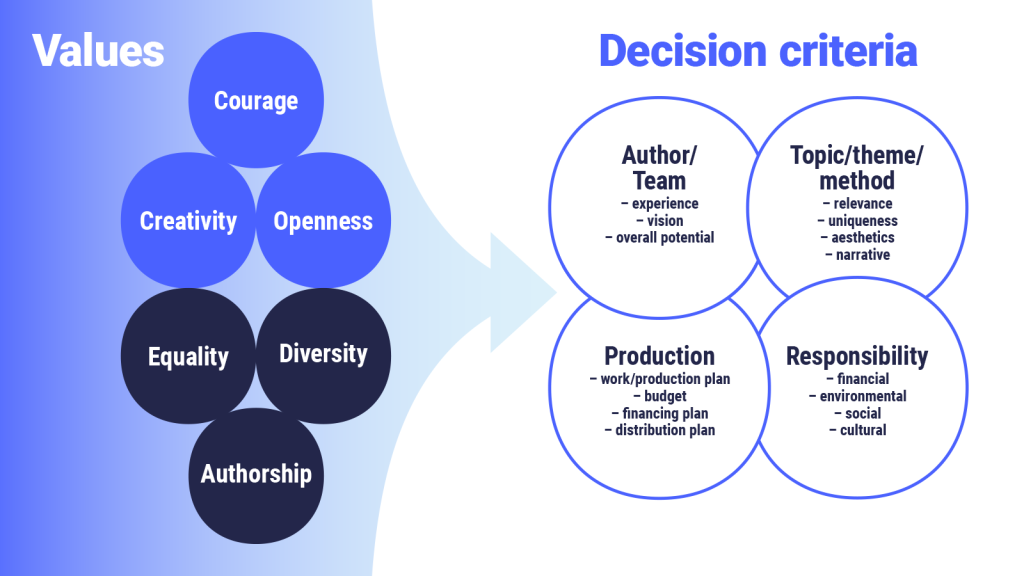
When making decisions, the applications are considered in their entirety, which means that they are also compared with each other: with those that have already been decided on and those that are currently being processed.
AVEK’s decision criteria consider the following aspects:
Author/team
The author or the working group / team is assessed in its entirety, considering factors such as the author’s experience and vision or the complementary abilities of the group’s members.
Topic/theme/method
The topic, theme and method of the project are assessed through perspectives of their relevance, uniqueness, aesthetics and narrative.
In terms of relevance, the meaningfulness of the project in general is highlighted, not only today’s ‘hot topics’. Instead, the wider significance of the theme is considered.
Uniqueness refers to the specialness of the topic or the theme, and the author’s own perspective.
Aesthetics and narrative answer questions about the work’s insightfulness – about what kind of narrative the visual thinking in the application represents.
Production
Production plans – the work plan, budget, financing plan and distribution plan – are reviewed in relation to their level of realism and innovativeness. The plans are considered in terms of concrete actions and their financial impacts. The accuracy expected from these plans is the greater the more extensive the application is or the more support AVEK has already granted.
Responsibility
Responsibility here refers to the responsibility for the production being made. Financial responsibility comprises managing the production’s legal agreements and obligations as well as honouring copyrights.
In terms of environmental responsibility, we are reviewing how the principles of sustainable development have been taken into account in the work’s or event’s plans and objectives.
Social responsibility includes diversity, equal treatment and occupational safety in general. It also covers the commitment to anti-discrimination and anti-harassment and following these principles in previous productions.
Under the term of cultural sustainability, we review the representativeness of national diversity, geographic coverage and the development and promotion of audiovisual culture.
